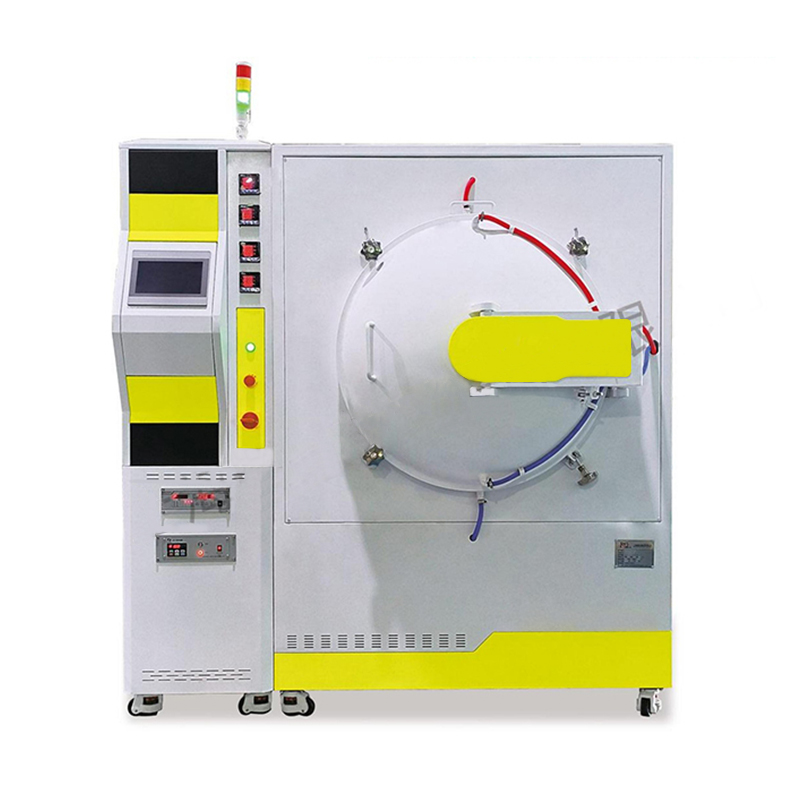
Content
Atmosphere control inside the melting chamber is a primary lever to preserve metal purity. Furnaces that permit controlled inert or reducing atmospheres (nitrogen, argon, forming gas, hydrogen mixes) limit oxidation of reactive alloying elements and prevent formation of oxide inclusions. Vacuum or low-pressure melting further removes dissolved gases (oxygen, hydrogen, nitrogen) and volatile impurities by lowering partial pressures and accelerating degassing. For non-ferrous and specialty alloys, precise atmosphere management prevents decarburization, sulfide formation, and surface contamination that would otherwise degrade downstream mechanical properties.

Accurate temperature control reduces thermal segregation and minimizes dross formation. Modern induction and resistance furnaces with PID or model-predictive controllers can maintain melt temperature within tight tolerances (often ±1–5 °C depending on alloy). Even thermal fields reduce local over-heating that drives oxidation and volatilization of low-boiling impurities. Uniform heating—achieved through optimized coil/susceptor design in induction systems or gas burner staging in fuel-fired furnaces—produces consistent superheat, improving solubility of alloying elements and reducing the tendency for microsegregation during solidification.
The materials in contact with molten metal are frequent contamination sources. Selection of crucible and refractory materials matched to alloy chemistry (graphite, silicon carbide, alumina, fused silica, specialty coatings) minimizes dissolution of crucible constituents. Coated crucibles or ceramic linings reduce pickup of iron, carbon or silicon from refractory layers. Routine inspection and scheduled replacement of worn linings prevent inclusion generation from spalled refractory fragments.
Active in-melt treatments remove dissolved gases, non-metallic inclusions and surface oxides. Gas purging (argon, nitrogen) combined with rotary impellers or bubbleless degassing probes promotes flotation of inclusions and accelerates hydrogen/oxygen removal. Chemical fluxing (appropriate flux choice for the alloy system) binds oxides into slag that can be skimmed, preventing re-incorporation of contaminants. Controlled slag management—forming a stable, low-volatile slag layer—also limits reoxidation during holding.
Physical filtration—ceramic foam filters, permeable refractory inserts, or in-line filter media—removes non-metallic particles before casting. Filtration near the pour spout or within tundish systems captures entrained dross and inclusions, directly improving cleanliness. Designing flow paths to minimize turbulence and splash reduces re-entrainment of slag particles and preserves filter life.
Mechanical or electromagnetic stirring ensures uniform chemical distribution and temperature homogenization. In alloys with multiple alloying additions, controlled stirring dissolves additions rapidly and evenly, preventing local concentration spikes that cause segregation on solidification. Electromagnetic stirring is particularly effective in induction melts, producing gentle bulk flow without introducing refractory particles.
Automated dosing (weigh feeders, controlled powder feeders, and flux dispensers) improves repeatability of chemistry by minimizing operator variability. Closed feeding systems reduce exposure of additions to ambient moisture and oxygen, which can introduce oxides. Precise dosing combined with real-time process feedback enables tight adherence to target compositions and reduces need for corrective rework.
Gentle, laminar pouring minimizes turbulence that entrains air and slurry inclusions. Well-designed ingates, tundishes and sprues with tapered flow, filtration, and plunge pour techniques reduce oxide entrainment. Minimizing splash and free-fall distances also preserves metal cleanliness and reduces reoxidation at the surface before solidification.
Instrumentation—thermocouples, oxygen probes, hydrogen monitors, and spectrometers—enables closed-loop control and early detection of off-spec conditions. Online spectroscopy or X-ray fluorescence (XRF) sampling verifies chemistry before pouring. Recording batch parameters (temperatures, purge times, flux weight, filter serial numbers) supports traceability and root-cause analysis when impurities are detected in downstream inspection.
Regular cleaning of furnace ports, ladles, and transfer lines removes build-up that can spall and re-enter melts. Strict segregation of scrap bins, cleaning of tools, and controlled access to melt area reduce foreign material ingress. Scheduled refractory inspections, crucible replacement schedules, and documented clean pour procedures are practical steps to maintain consistency across batches.
Downstream verification—spectrochemical analysis, gas-content measurement (hydrogen/oxygen), metallographic inclusion rating, and mechanical testing—confirms that furnace controls yield the intended purity. Inclusion rating (e.g., per ASTM E45) and non-destructive testing (ultrasonic, X-ray) provide objective measures of internal cleanliness and consistency between heats.
| Feature | How it improves purity | Practical considerations |
| Atmosphere control / vacuum | Reduces oxidation and dissolved gases | Requires sealed chamber, gas handling, costlier equipment |
| Filtration (ceramic foam) | Removes non-metallic inclusions prior to casting | Must be sized correctly; adds flow resistance |
| Degassing / purging | Eliminates dissolved hydrogen/oxygen, reduces porosity | Requires gas supply, probes, and controlled agitation |
| Automated dosing | Improves chemical repeatability and reduces operator error | Needs calibration and integration with process controls |
| Crucible / refractory choice | Prevents pickup of contaminant elements | Material cost and replacement schedule affect operating cost |
Conclusion: A metal melting furnace enhances purity and consistency through combined actions—preventing oxidation with atmosphere control, removing dissolved gases by degassing or vacuum, capturing inclusions via filtration and fluxing, enforcing thermal uniformity, and applying precise dosing and monitoring. Implemented together as an engineered process, these measures reduce defects, improve mechanical properties, and deliver repeatable alloy chemistry across production runs.
Introduction: Aluminum silicate fiberboard material is currently a high-performance insulation material. Aluminum silicate fiberboard has excellent properties such as light w...
Introduction: Aluminum silicate refractory fiber products are made by selective processing of pyroxene, high-temperature melting, blow molding into fibers, solidification mol...
Introduction: 1、 Shaped ceramic fiber furnace lining for high alumina ceramic fiber board The shaped ceramic fiber furnace lining of high alumina ceramic fiber board mai...